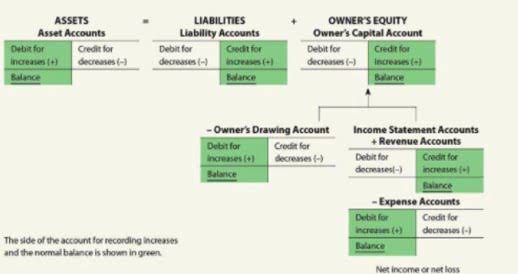
The cash budget is crucial for managing cash flow, optimizing working capital, and avoiding cash shortages. The finance department is responsible for creating a master budget because they are the ones who have access to financial data and are familiar with Grocery Store Accounting the financial operations of the business. The finance team typically consists of financial analysts, accountants, and other professionals with a finance and accounting background. For short-term planning, you can simply multiply the number of units to be sold from each product times their price. Keep in mind that both quantity and price estimates for the future depend on the company’s strategy and objectives. Knowing what a Budget is and how to prepare one from scratch are two of the most fundamental skills a financial analyst needs to have under their belt.
How To Write a Letter to the Editor in 8 Steps
It brings structure to the budgeting process by combining operating, capital expenditure (CapEx), and cash budgets into one coordinated plan. The pro forma income statement is a company’s forecasted income statement that combines sales revenue with other budget costs. The pro forma income statement is essential for monitoring financial performance, making informed decisions, and achieving financial goals. First, they need to understand financial statements, such as the income statement, balance sheet, and cash flow statement.
- Bringing together various streams of interrelated information can be a cumbersome task.
- It serves as a roadmap for the organization’s financial activities over a specific period, typically a fiscal year.
- By comparing actual financial results to the budgeted figures, businesses can identify areas where they exceed or fall short of their financial goals.
- A well-prepared master budget is accurate and aligns with the business’s strategic goals and values.
- Understanding the purpose makes the master budget definition and process clearer.
- It enables them to plan and allocate resources, make informed decisions, and achieve financial objectives.
How To Prepare a Master Budget (With an Example and Tips)
By doing so, businesses can create a master budget that benefits all stakeholders and contributes to the common good. Businesses must ensure transparency in the budgeting process, providing accurate and complete information to stakeholders. Transparency helps build trust and credibility with stakeholders, including shareholders, investors, and employees. Another common challenge businesses face when preparing a master budget is overlooking key expenses.
- The operating expenses budget encompasses administrative and sales-related costs, such as advertising or marketing.
- The Master Budget is a comprehensive financial planning document that aggregates all of the inputs submitted by the various departments.
- For example, adjusting the sales budget and related budgets such as production, labor, and overhead may be necessary if sales are lower than expected.
- Developing a master budget provides businesses with a roadmap for their financial goals.
- Take Nelson Technologies, a manufacturer of technical equipment, as an illustration.
Cost of Goods Sold Budget
This helps managers make strategic decisions that align with financial objectives. Developing a master budget provides businesses with a roadmap for their financial goals. It allows companies to thoughtfully plan their operations, cash management, and strategy based on forecasted figures. Various budgeting software is available to help businesses streamline and automate the budgeting process. These software tools allow businesses to create and manage budgets, track expenses, and generate reports.
Ensure Compliance

More specifically, it compiles the business units’, departments’, and cost centers’ expectations and consolidates them in Budgeted financial statements. However, while any Annual Report looks into the past and depicts the firm’s historical performance, the Master Budget is all about the future of an organization. To determine how much money to set aside for the raw materials needed to construct each product, such as steel or lumber, use a sales and product budget. Determine which materials each product needs, then estimate how much a company must spend to produce a finished product.

- Once finalized, the master budget produces a complete set of forecasted financial statements, including the income statement, balance sheet, and cash flow statement.
- Thus, the master budget has detailed information about the future financial statements and cash flows estimated after considering current loan rates, cash flows, and debt limits.
- Regularly reviewing and adjusting the master budget can help businesses ensure compliance with regulations and internal policies.
- By taking this action, a business can more accurately forecast the number of employees to hire and the likelihood of overtime work.
- By doing so, businesses can create a master budget that benefits all stakeholders and contributes to the common good.
- This means considering the impact of their financial decisions on the environment, society, and the economy.
Monthly updates allow businesses to track their financial performance in real-time and make informed decisions based on the available data. In addition to the fiscal year, businesses should consider external factors that may impact their financial performance. For example, changes in the market, regulatory environment, or competition can affect the business’s revenue, expenses, and cash flow. Businesses should consider these external factors when preparing their master budget to ensure accuracy and reliability. The Master Budget is a comprehensive financial planning document that aggregates all of the inputs submitted by the various departments.

The selling and administrative expense budget allocates $150,000 for marketing and $100,000 for administrative salaries. The cash budget forecasts $1,000,000 in cash receipts from sales and CARES Act $900,000 in cash disbursements, resulting in a net cash inflow of $100,000. The capital expenditures budget includes $50,000 for new equipment, while the budgeted income statement shows a net income of $200,000 after accounting for all revenues and expenses.

Businesses that fail to account for cash flow when creating their master budget can quickly face financial difficulties. Still, if most of its revenue is tied up in accounts receivable, it may not have enough cash to cover its expenses. To avoid prepare a master budget this mistake, businesses should carefully consider their cash flow projections and ensure they have enough cash to cover their expenses.



